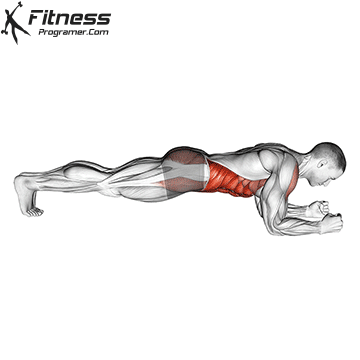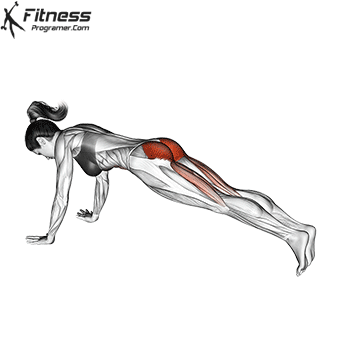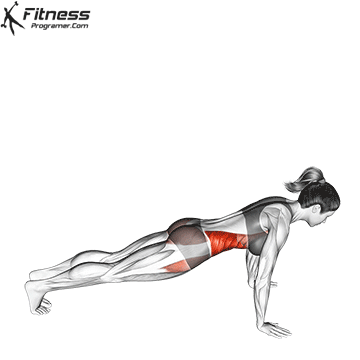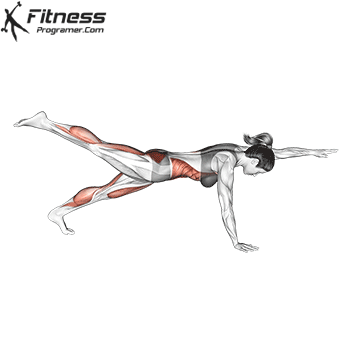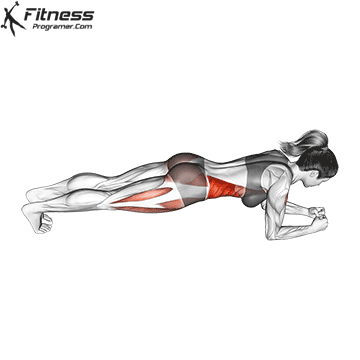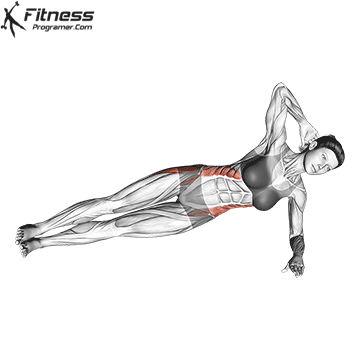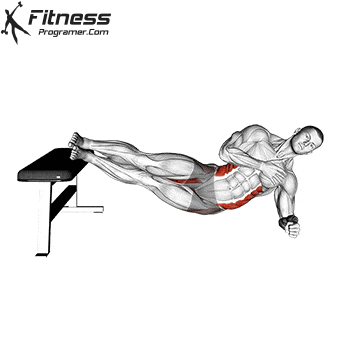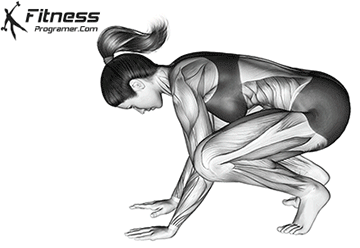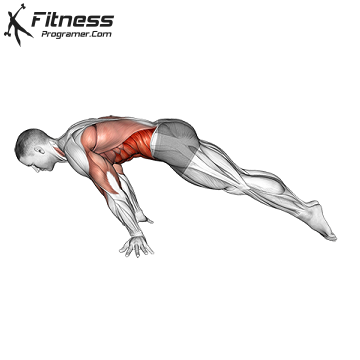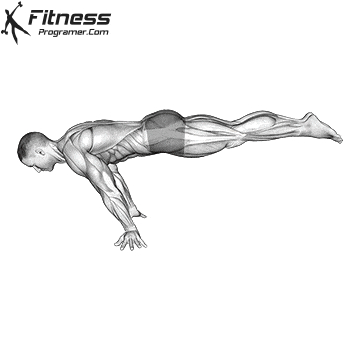Overview
The high plank is an isometric hold where the body is aligned in a straight line from head to heels, supported on the hands and toes. Unlike the forearm plank, it is performed with the arms fully extended, engaging the chest, shoulders, triceps, and core. It improves muscular endurance, spinal alignment, and is a prerequisite for movements like push-ups and burpees. It’s suitable for all fitness levels and commonly used in yoga, calisthenics, and strength programs.
How to perform High Plank
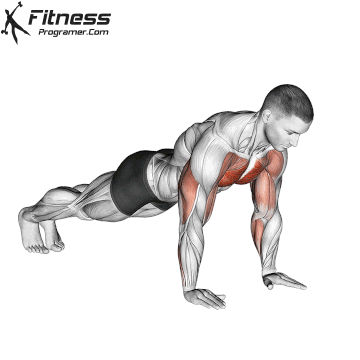
Start in a push-up position, with hands directly under the shoulders and legs extended behind you.
Engage your core, squeeze your glutes, and keep your body in a straight line from head to heels.
Press firmly through the hands, keeping your shoulders active and stable.
Hold the position while breathing steadily, avoiding any sagging or arching.
Begin with 20–30 seconds, gradually increasing time as strength improves.
Tips for Proper Form
Keep your head neutral, not dropping or craning the neck.
Squeeze the glutes to protect the lower back.
Engage the quads to maintain a rigid body line.
Distribute pressure evenly between hands and toes.
Maintain steady breathing without holding your breath.
Common Mistakes
Letting hips sag, which places strain on the lower back.
Raising the hips too high, reducing core engagement.
Shrugging the shoulders, causing neck tension.
Locking out the elbows completely, reducing shoulder stability.
Not engaging the core, leading to poor alignment and effectiveness.
Benefits of the High Plank
Strengthens the Entire Core: Engages abdominals, obliques, and deep core stabilizers simultaneously.
Improves Postural Alignment: Reinforces good spinal positioning and shoulder control.
Builds Upper Body Endurance: Strengthens the shoulders, triceps, and chest through isometric tension.
Enhances Functional Stability: Transfers to real-life movement patterns like pushing, lifting, and carrying.
Supports Injury Prevention: A strong core reduces the risk of low back pain and postural imbalances.
Adaptable to All Levels: Easily modified for beginners or intensified with variations like shoulder taps or sliders.
Requires No Equipment: Can be performed anywhere as part of a quick, effective workout.
How to Incorporate Into Your Routine
- For Beginners: Start with 2–3 sets of 20–30 seconds focusing on alignment and breathing.
- For Strength: Try 3–4 sets of 30–60 seconds, gradually increasing time under tension.
- For Functional Training: Pair with dynamic core work like bear crawls or loaded carries.
- For Circuit Training: Include high plank holds or variations between strength exercises.
- For General Fitness: Add to your warm-up or cooldown to improve core engagement.
- For Mobility and Rehab: Use modified plank positions to build endurance and control safely.
High Plank Muscles Worked
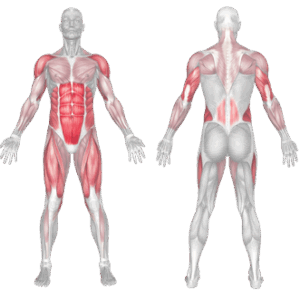
High Plank Variations
Frequently Asked Questions
How long should I hold a high plank?
Start with 20–30 seconds and build up to 60 seconds or more as your core strengthens.
Is the high plank better than the forearm plank?
Both are effective. High plank recruits more upper-body muscles, while forearm plank targets deeper core stabilizers.
Can I do planks every day?
Yes, if done with good form and moderate volume. They’re low impact and ideal for daily practice.
Does the high plank build muscle?
Yes, it develops endurance and stability in the core and upper body, especially when combined with movement-based variations.
What’s a good progression from a high plank?
Try shoulder taps, plank walks, or high-to-low plank transitions to build dynamic core strength.

